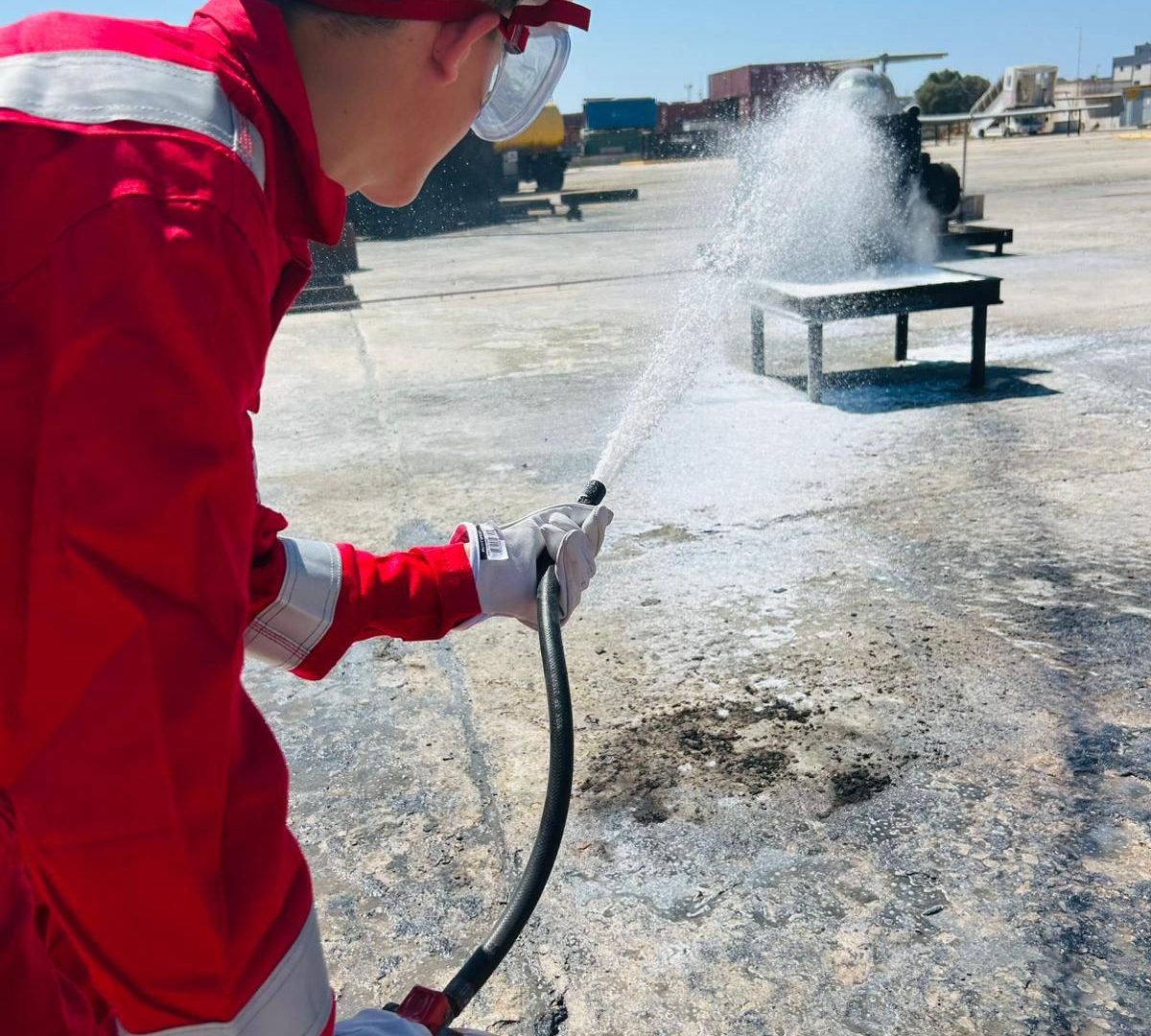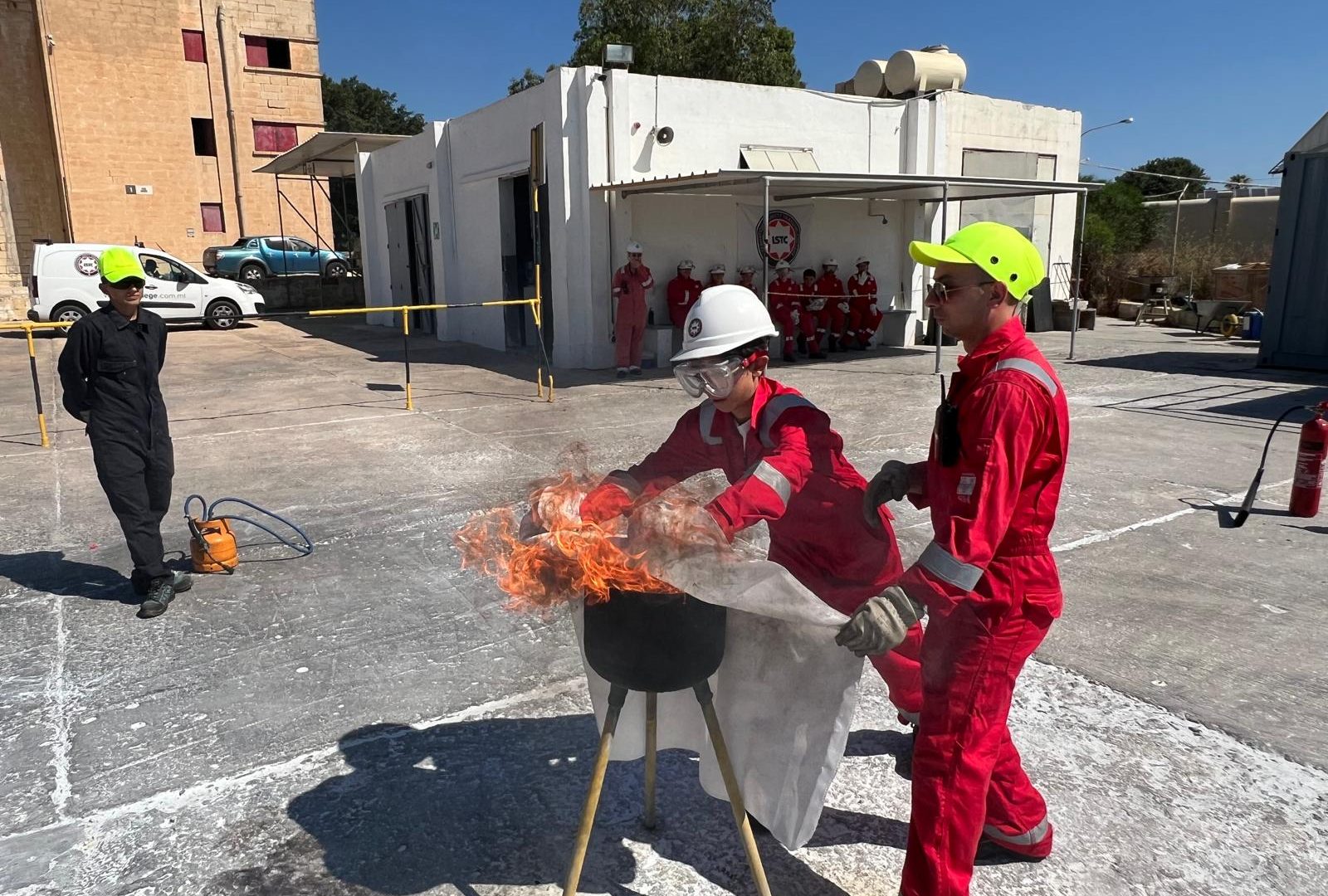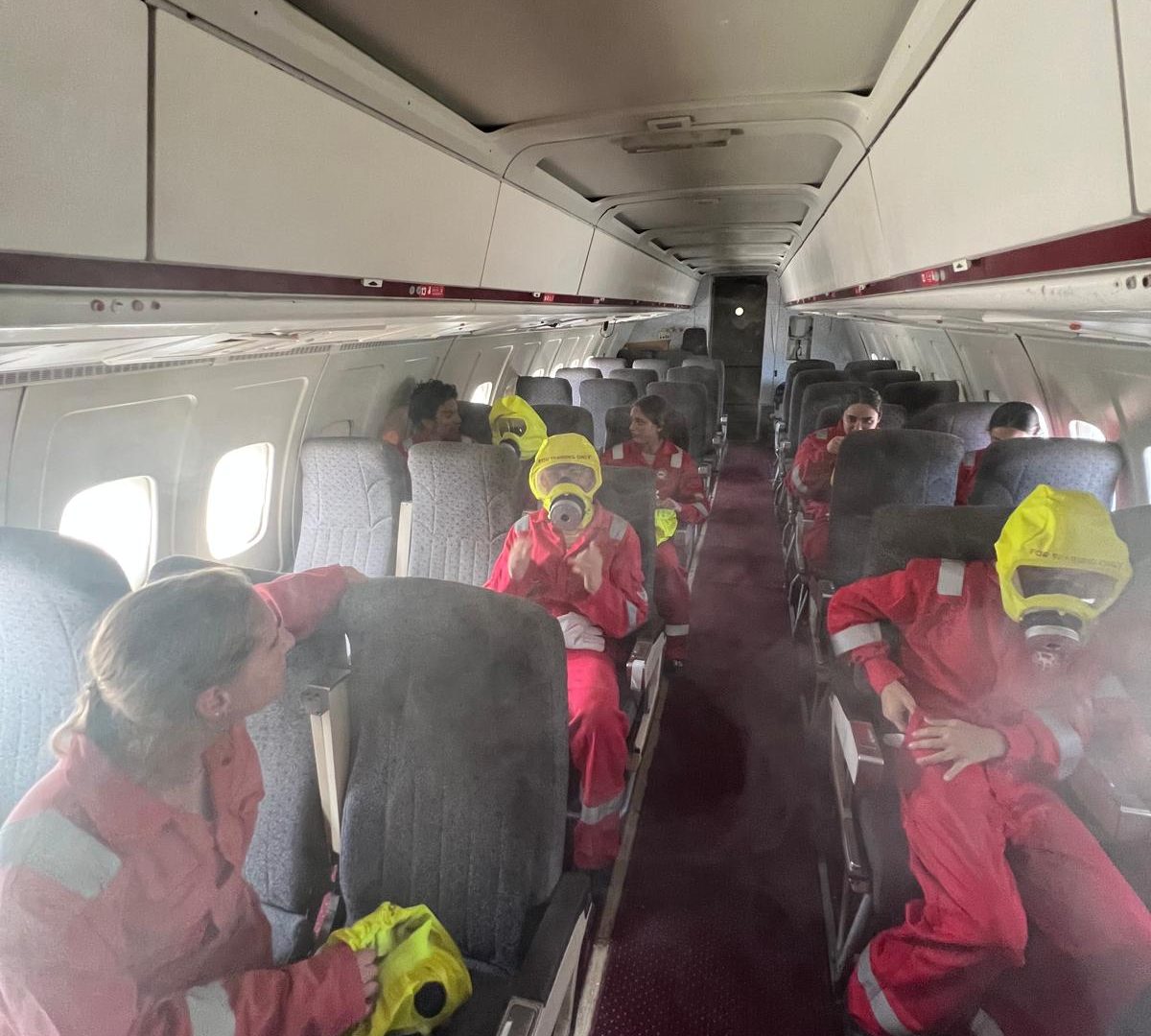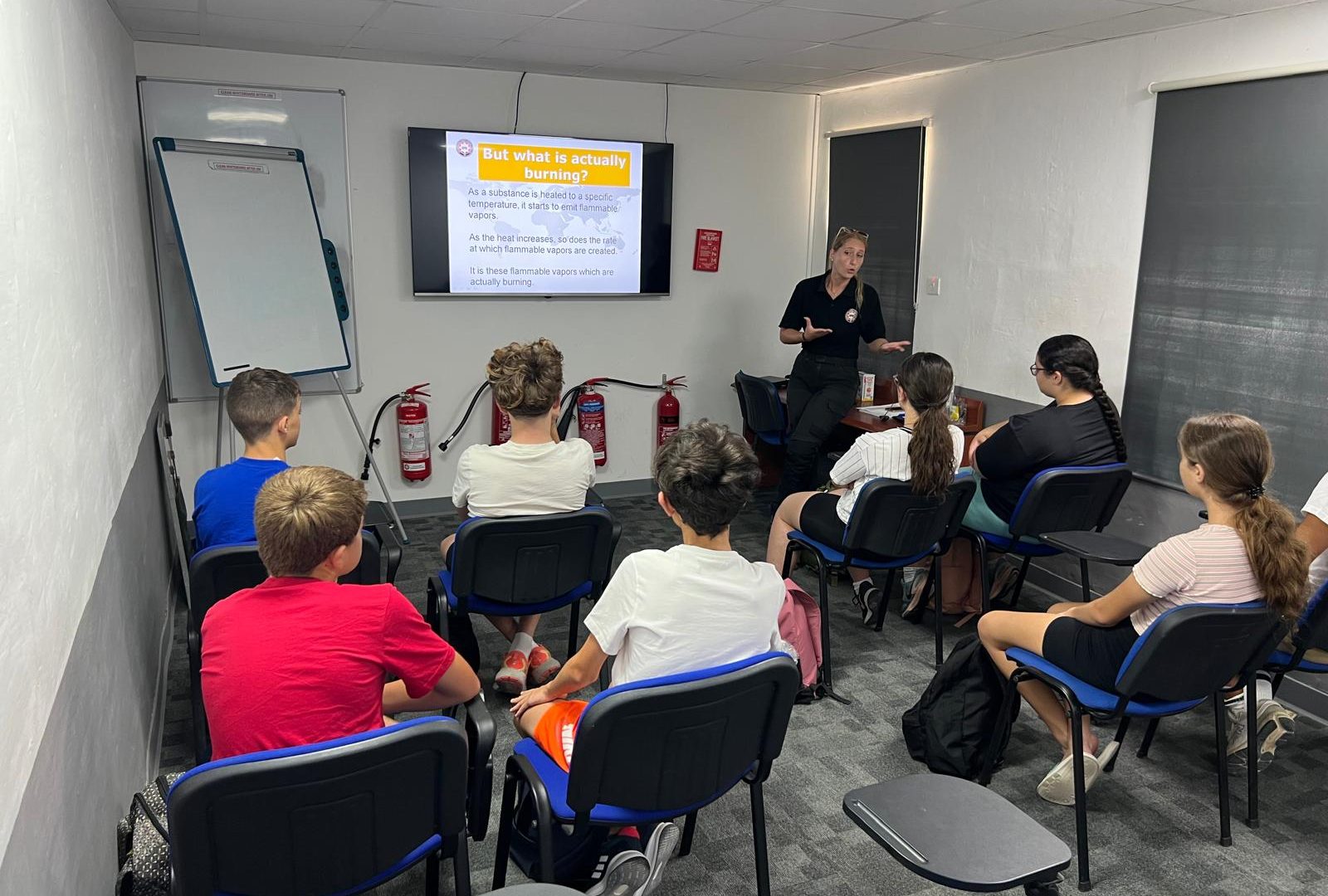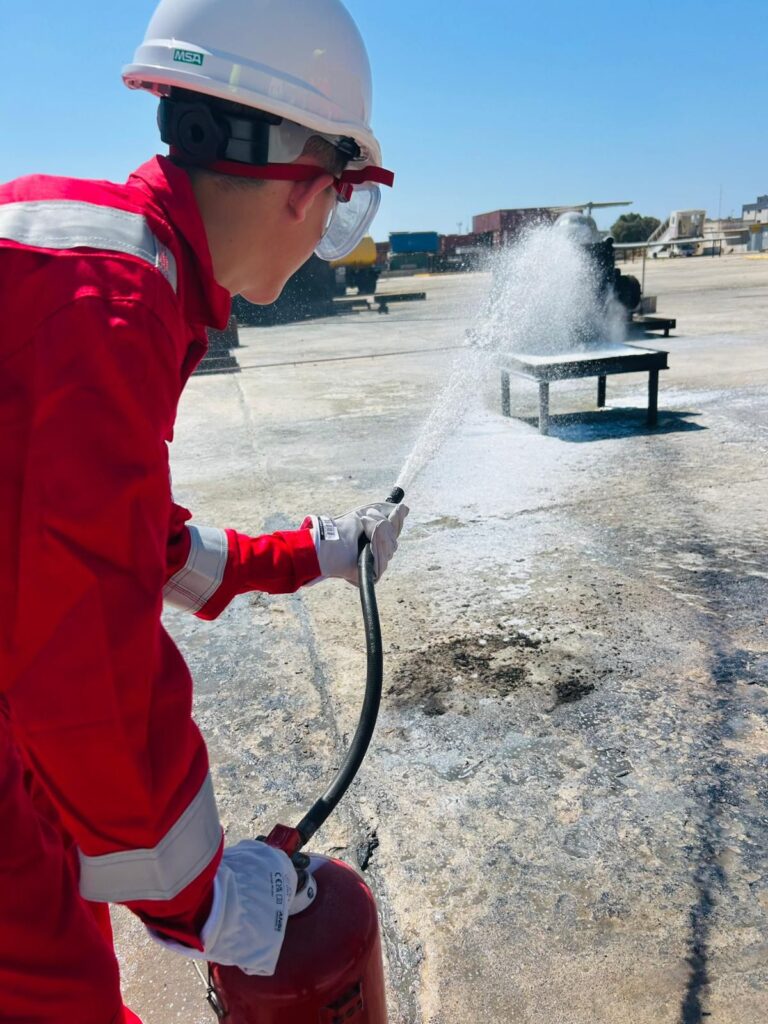
Our day began in a very welcoming and professional environment. As soon as we entered the air-conditioned restaurant, we were greeted warmly by the instructors. To start the session, we were asked to fill out a few important forms. These were to ensure safety and administrative purposes, ensuring that all participants were aware of the protocols and procedures for the day.
Once the formalities were completed, we began a lesson, which was an introduction to basic fire safety. The instructors gave us informative briefing on how to properly use fire extinguishers and the importance of PPE, Personal Protective Equipment. They also discussed general fire safety tips, emphasizing the significance of remaining calm and making the right decisions during emergencies.
After the briefing, we were each handed a set of PPES that matched our individual sizes. It was reassuring to see that the equipment was thoroughly cleaned and well-maintained. Once we had our gear on, we moved on to our first practical exercise: learning how to use different types of fire extinguishers. We were taught the correct procedure step-by-step: first raise the alarm, choose the right type of fire extinguisher based on the fire, use the extinguisher till it is empty and finally, place the used extinguisher on the ground in a horizontal position before evacuating.
Next, we were trained on how to correctly wear and use a gas mask. This was essential for the following simulation, where we entered a mock aircraft cabin filled with that when we entered and everyone was sited artificial smoke started to come out. This exercise was done to replicate a real-life emergency scenario inside an airplane. Using our training, we successfully wore the training gas mask navigated the smoky cabin and evacuated safely, relying on our senses and the guidance we had received.
After this, we changed into a different set of PPES for water-based training. We proceeded to a large pool, where we learned how to survive in cold water. Each one of us was given a life jacket, and we practiced techniques for conserving body heat and staying afloat. We also learned how to position ourselves to be easily seen by rescuers, such as those in helicopters or rescue boats. Then, we simulated boarding a marine hovercraft safely, followed by practicing being rescued by a helicopter.
The training concluded by taking a shower and changing back into our regular clothes. We then gathered for lunch, which was delicious.
Overall, the experience was not only educational but also very engaging. It provided hands-on training that could prove crucial in real-life emergencies. The instructors were professional, the facilities were excellent, and I left the training feeling much more confident in my ability to handle emergency situations safely and effectively.
by Giuseppe
